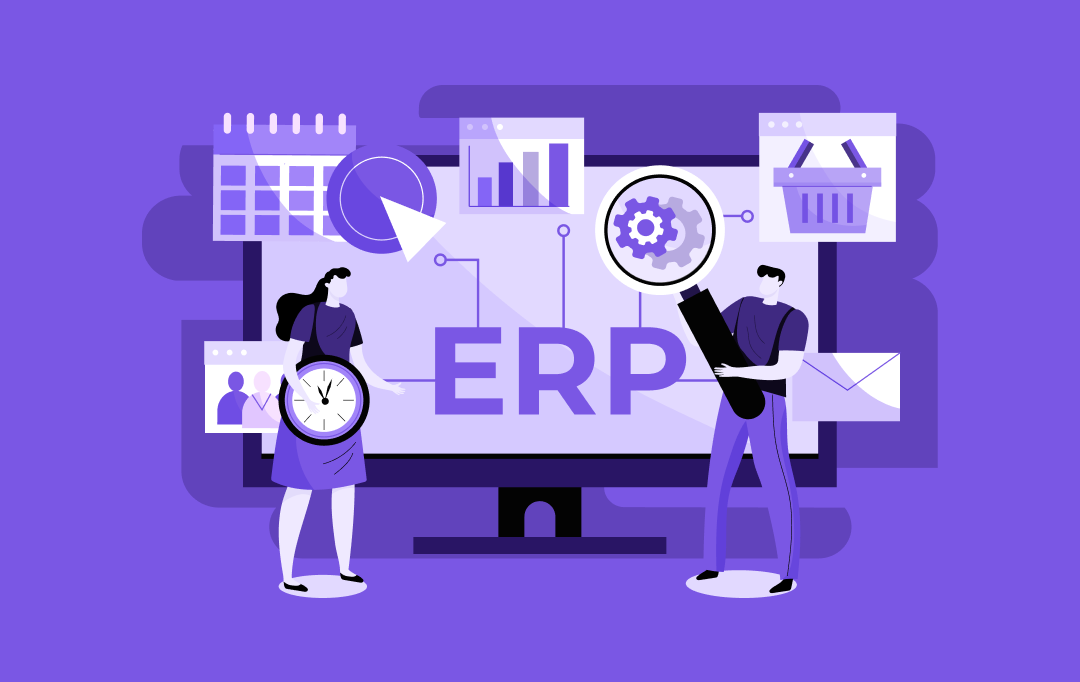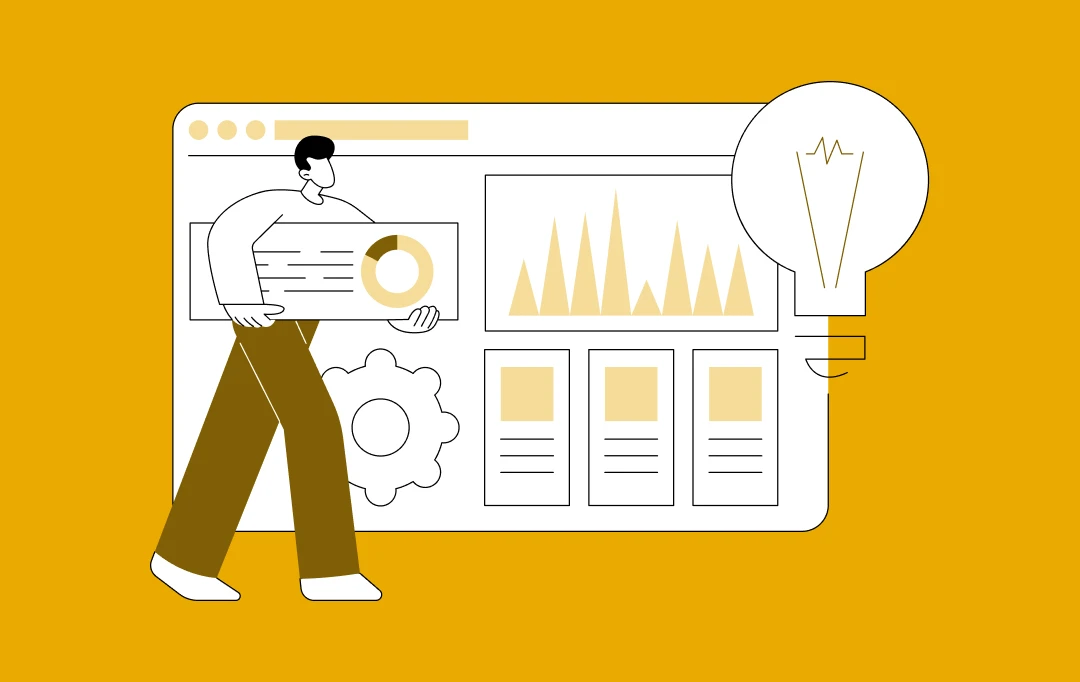- How Telematics Insurance Works
- Example of Telematics in Insurance Industry
- Applications of Telematics in Insurance Business
- Benefits of Using Telematics in Insurance Business
- Telematics Systems Contribute toward Customer Engagement
- Telematics Systems Keep Insurers Ahead of the Competition
- Telematics Systems Lead to Reduced Costs for Organizations
- Adopting Telematics Makes Organizations Perceived as Tech-Friendly
- Impact of Telematics in Other Insurance Sectors
- Telematics Health Insurance
- Telematics Life Insurance
- Telematics in Home Insurance
- Challenges Associated with Telematics
- How Appinventiv can help your insurance business with telematics
- FAQs
There is no doubt that businesses have better ways to offer exceptional customer service when they can get a complete image of their clients. With telematics in the insurance business, the insurance provider uses the same strategy of getting to know its clients well. If your business or startup serves the insurance sector, telematics offers you the chance to improve customer service and grow your clientele.
To learn how to enhance your telematics insurance strategy and discover the benefits of telematics in insurance industry for both you and your customers, read this article through to the conclusion
How Telematics Insurance Works

Traditionally, among other things, your car’s model is considered when calculating the cost of your auto insurance policy. As a result, if two persons own the same vehicle, make, and model, their insurance rates will probably be comparable. What transpires, though, if one of the two drivers is a safer one? Should they continue to pay the same premiums? This is where usage-based or telematics-based auto insurance coverage comes into play.
Telematics devices are linked into automobiles to track the hazards involved, and the insurance industry has accepted this idea under the name “Usage Based Insurance.” These telematics devices document the driving habits of car owners, including the daily mileage, the typical speed, and the degree of safety with which a vehicle is operated.
These records are subsequently utilized to determine vehicle-specific motor insurance prices based on the risk connected to each vehicle. For instance, a car’s insurance rate will be higher if it is frequently driven at high speeds on highways than if it is driven at modest speeds inside a city.
The use of telematics boosts affordability for individuals who drive less and maintain safe driving practices, ensuring that auto insurance customers pay a fair price. Additionally, it aids insurance companies in precisely calculating accident losses and lowering the frequency of bogus claims. But how do businesses implement telematics technology?
As per Allied Market Research, Telematics insurance market is growing strong to reach $13.78 billion in 2030 at a CAGR of 19.5%.
Usage reports are not required under UBI. It runs automatically. Most of the time, drivers are not required to inform their insurance provider of any driving-related information. The insurance provider can keep tabs on their customers’ driving and create reports in various methods. Many possibilities are available thanks to this modern technology; here are a few of them:
1) Mobile App: The insurance provider may ask the drivers to download a particular app and agree to certain privacy restrictions to track their movements and those of the vehicle.
Know how much it costs to build an on-demand insurance app.
2) Connect-in Device: Just like a pen drive is plugged into a laptop, a piece of equipment can be plugged into a car for tracking.
3) GPS Devices: Advanced GPS units can follow a user’s movements and provide the insurance provider with essential driving data.
4) Onboard Sensors: The vehicle may be equipped with onboard sensors that can store and transmit vehicle-related information in real-time or later.
5) Mileage (Miles) Detection: In this case, the implanted device’s function is to record and communicate the length of time the car has been on the road. The distance determines the insurance premium.
[Also Read: How can insurance enterprises innovate to beat the competition?]
Example of Telematics in Insurance Industry
On the weekends, Mr A uses his automobile to get around the city. He observes speed restrictions, is a skilled driver, and has experience behind the wheel. Mr. B is a novice driver who is still learning how to drive. He drives his car during the week and frequently accelerates and brakes suddenly. He travels by automobile on the weekends.
Mr A will pay a lower premium because he drives safely and does not use his car much, which lowers the likelihood that he would file a claim. On the other hand, since Mr B is inexperienced, drives rashly, and uses his car frequently, it increases the likelihood of automobile damage and, consequently, of a claim.
This information can help telematics insurance industry companies determine the selection of premiums for their customers. This can also help the customers keep track of their driving stats.
To give you a real example of an insurance company using telematics to its advantage is Progressive Corporation. The company offers significant discounts on auto insurance premiums to its customers based on the driving habits data retrieved from the telematics tool named, Snapshot.
Applications of Telematics in Insurance Business

The technology of telematics has a wide range of applications in the auto insurance sector. These telematics for insurance uses will benefit an insurer as well as the insured. Let’s look at some of the significant uses of telematics in insurance:
- Reporting crash data – Reports can give insurance and car owners the required information about what caused an accident.
- Trailer tracking – Trailer tracking is a system that uses a location unit attached to the trailer to follow the motions and position of the trailer unit of an articulated vehicle.
- GPS anti-theft systems – GPS tracking gadgets are now commonly accepted and mandated by motor insurance on high-end automobile models, helping to prevent auto thefts.
- Help with research – Floating car data can give motor insurers useful statistical information about driving behavior that they can use to hone their intricate insurance models for calculating premiums.
- Fraud prevention – Vehicle telematics can help uncover attempted fraud and explain the mysterious disappearance of automobiles.
- Lowering insurance costs for risky drivers – Because they are engaged in accidents more frequently than other drivers, male drivers between the ages of 18 and 25 pay rates that are several times higher. They might lower their insurance costs by installing a telematics device, demonstrating that they are more cautious than the average driver.
- Better risk management for business – Modern car telematics solutions provide information that gives insurance companies and their agents the tools to recognize fleet operators that uphold high traffic safety standards.
- Wireless vehicle safety communications – This is telematics set up for exchanging safety data on things like road dangers and the positions and speeds of cars, among other things.
- Cold storage freight – To set off alarms and keep track of transactions, cold storage freight trailers are increasingly adding telematics to collect time-series data on the temperature inside the cargo container. A telematics system can guarantee that the temperature throughout the shipment remains within food-safety norms. It can do this with an increasingly complex array of sensors being deployed, many of which use RFID technology.
- Vehicle emergency warning system – “Intelligent vehicles” are outfitted with technology to synchronize (or mesh) warning information with adjacent vehicles in the region of travel, intra-vehicle, and infrastructure.
- Satellite navigation – A GPS and electronic mapping system allow a driver to find their location, plan their trip, and navigate a route.
These wide and dynamic applications and uses of telematics in the insurance industry makes it the next technology frontier for your business!
Benefits of Using Telematics in Insurance Business
While there must be complete clarity on the various applications of telematics in the insurance business, let us now look at a few precise ways in which insurers can exploit these use cases towards their business’ benefit.

Telematics Systems Contribute toward Customer Engagement
By better understanding your customers, you can categorize them more efficiently and provide them with customized automobile insurance plans that suit their needs. Your items must be customized if you want to give exceptional consumer involvement and experiences. Data analysis can be used to develop a comprehensive picture of the consumer, which is necessary for personalized offerings.
Additionally, telematics systems frequently result in ongoing client interaction with the carrier via an app or other devices to monitor their usage. Rewards and point scoring are two gamification aspects that draw attention and help deter risky driving. High levels of customer interaction increase the likelihood that they will be pleased with the service and be prepared to pay extra.
Telematics Systems Keep Insurers Ahead of the Competition
What are the benefits of an insurance program that rewards customers for driving more safely while utilizing the equipment they already own? It serves as a good, concrete reason to follow traffic laws. It’s a mechanism that effectively lowers insurance rates for those who drive the safest on the road. Additionally, it enables insurance companies to identify those drivers who endanger other motorists, allowing them to raise their customers’ premiums while reducing those of safer drivers.
In the end, insurance firms may create more competitive pricing and rates thanks to mobile telematics and the deep knowledge from mobile data analytics, providing them a competitive edge over rival auto insurance providers. Insurance businesses that participate in UBI projects also have the chance to evaluate how their pricing structure will develop and alter over time, thanks to the collection of a plethora of data.
Telematics Systems Lead to Reduced Costs for Organizations
More insurance companies are using their clients’ smartphones as telematics technology advances. Since most people always have their smartphones with them, they have developed into a valuable tool for insurers because they already have sensors that enable measuring things like speed, travel distance, or information about the driver, like whether the car owner is behind the wheel or the driver’s age. Therefore, a smartphone app is the least expensive way to implement usage-based insurance.
[Also Read: How much does State Farm-like auto-insurance app development cost?]
Safe drivers lower the cost of claims, making insurance more beneficial. Additionally, usage-based insurance promoting safe drivers will likely draw less risky clients. Drivers with a history of accidents or speeding fines are unlikely to enroll in a usage-based insurance program.
Claims can be decreased by improved behavior and positive selection. Additionally, data enrichment helps insurance companies identify incidents early and notify services. The service can then make more precise liability choices based on location or time information. In addition, the First Notification of Loss (FNOL) enables the insurer to manage claims in minutes rather than several days.
Adopting Telematics Makes Organizations Perceived as Tech-Friendly
Imagine that a motor insurance provider offers a mobile telematics insurance alternative while continuing to serve most of its other clients using the conventional insurance approach. Only a tiny but significant portion of the company’s customers have joined the mobile usage-based program after a year or two. This may be because the company hasn’t had time to market its UBI service effectively. Is the attempt at usage-based insurance a failure?
No, and for one very important reason: it demonstrates to customers that their insurance provider is innovative and constantly coming up with new concepts and insurance programs that can help their customers, even those who (at this time) choose not to use the mobile UBI model. Even if a consumer decides that mobile telematics isn’t for them right now, they can have a change of heart in the future. They will also be pleased with their insurance company’s innovative strategy for boosting its line of services.
Of course, there are benefits of telematics in the insurance industry for the clients who join a mobile telematics program. They will see a decrease in their premiums if they maintain safe driving habits, which will make them believe that their insurance company genuinely cares about compensating them for driving safely. A cautious driver will be less inclined to sever their links with their provider in favor of another auto insurance business because the relationship that develops between the insurance company and the client will be closer and more personalized.
Impact of Telematics in Other Insurance Sectors
For now, other insurance markets do not use usage-based insurance (UBI) in the same way that the auto sector does. However, it might not be long until health insurance firms, life insurance firms, and home insurance firms start using, at least in part, telematics-based data or telematics insurance statistics. Let’s see how telematics and insurance sector merger together:
Telematics Health Insurance
Health insurers have long been benefiting from a digitalized insurance sector. The insurers have been using data to assess the risks involved in providing coverage for each client. Even the simpler decisions that health insurers make, like whether or not to offer coverage to a particular person, frequently involve data. Applicants are frequently profiled by companies in the health insurance sector, with important details like age, medical history, smoking/non-smoking status, and other aspects used to determine price and whether to accept or deny coverage.
Health insurance companies can collect the same information from fitness monitors through telematics technology. Then, telematics insurance industry companies can utilize that information to offer activity-based reward programs or discounts to new insurance applicants willing to disclose such information. Other health parameters can be coupled with various health-related data items, including distance traveled, elevation gains, and active minutes.
Telematics Life Insurance
Telematics technology can customize life insurance programs to receive more relevant premium quotes. The firm can use tracking systems to gather information on client behavior and develop customized offers for them.
Also Read: How Much Does it Cost to Build a White Label Insurance Quoting Software
You may learn more about a person’s activity levels, among other things, by gathering data through wearables or even ingestible. You will be able to determine how risky it can be for your business to insure him or her as a consequence. A lot of guessing may be removed with telematics-based health and life insurance.
In this respect, the problems businesses can have are related to user devices and data analysis. How can businesses get over these obstacles? Who is available to assist them?
Telematics in Home Insurance
Telematics might be quite interesting to businesses in the home insurance sector. After all, the underwriting procedure can become simpler if you can gather trustworthy information about what’s happening within the residence you intend to cover.
Intelligent home devices are essential in this situation because they may convey data about how well the house is maintained by, for instance, keeping track of the electrical system’s condition. A customer may qualify for a lower premium price if it is clear that he regularly repairs worn-out HVAC systems or keeps the stove in excellent condition.
The technology can also notify homeowners and insurers when maintenance needs to be done and monitor how risk-free a home may be. Consequently, the likelihood of insurance occurrences and ensuing claim filings is naturally decreased.
In addition to house insurance, telematics is important in protecting a property from fire, theft, and natural catastrophes. Businesses that hold commercial real estate, including manufacturers, merchants, and a wide range of other entities, may want to insure it to lower risks.
Here, telematics technology plays a similar role. The technology may continuously gather information on the condition of the commercial property’s fire alarm systems, water leak-detecting instruments, and other safety-related devices. Providing real-time warnings helps insurers understand how dangerous it is to cover a particular estate while also letting them know in advance when a claim is likely to occur.
Challenges Associated with Telematics
Telematic devices collect information in real time, allowing insurers to use this information to learn more about a customer’s driving habits. As telematics devices need to be installed in cars or retrofitted, data needs to be collected, which raises privacy concerns.
Before data is evaluated on a large scale to produce relevant insights, it frequently needs to be shared with various parties. This new data stream by telematics solutions adds complexity if an insurance company wants to partner or participate. Here, an effective insurance platform can organize data streams and collaboration.
How Appinventiv can help your insurance business with telematics
Although telematics technology is most prevalent in the auto insurance industry, there is still much room for this technology in other industries. Therefore, these clever telematics technology solutions may be the best next step in developing your business, regardless of the industry you work in. If you need telematics software developed, get in touch with our custom software development company in New York at Appinventiv.
We are a custom IT consulting company that provides custom Telematics software solutions to insurance firms that can help them keep track of the driving behaviors and other required data to provide better insurance solutions to their customers. Appinventiv, as a leading insurance software development company can help you acquire new clients by providing them with competitive insurance premiums and other features like safe driving tips, trip details, trip logs, and much more. Get in touch with our experts to discuss your requirements for telematics in the insurance business.
FAQs
Q. What is telematics insurance?
A. Also known as usage-based insurance, telematics insurance helps provide premium calculations based on driving habits. The solution helps in adjusting the premium rates by monitoring the habits with the use of technology.
Q. How does telematics help insurance companies?
A. With telematics motor insurance, also known as UBI, insurance providers would better understand the car owner’s risk profile based on mileage, average speed, frequency of use, and general driving prowess. Real-time data analysis aids in the investigation of claims by insurers and aids in detecting fraud claims.
Q. How does telematics insurance improve customer experience?
A. One of the most popular technologies utilized by auto insurers is telematics in insurance industry. It collects drivers’ driving information and builds a profile based on their habits. It is a crucial step because it aids in creating a personalized auto insurance policy and determines the cost. The expense of coverage may not be incurred by the car owners, who only pay the premium set forth for their specific policy.
The anti-theft systems provided by telematics technology can also assist consumers in securing their automobiles from theft. When a user purchases a car insurance policy, his premium prices may be reduced if the vehicle includes pre-installed anti-theft equipment like the steering wheel lock, alarms, and immobilizers with the help of telematics insurance. These all contribute towards an improved customer experience.
Q. Why do insurance companies use telematics?
A. Insurance companies utilize telematics to refine risk evaluations and tailor premiums. By utilizing real-time driving data through apps or devices, insurers can assess driving habits like speed and braking. This allows for more precise risk profiling, facilitates usage-based insurance models, and rewards safe driving with lower premiums. Additionally, telematics aids in fraud detection and enhances customer service by enabling more accurate policy pricing.


- In just 2 mins you will get a response
- Your idea is 100% protected by our Non Disclosure Agreement.

Custom Development or White Label Solutions: Which is Right for Your Business?
Key takeaways: 77% of companies are prioritizing digital transformation; the right tech approach is crucial for staying competitive. Custom development offers tailored solutions for unique needs, flexibility, and long-term scalability. Whereas, white-label solutions provide quick market entry, cost-efficiency, and easy customization for standard needs. Appinventiv’s expertise helps you navigate custom development vs white-label to choose…

ERP Integration in Australia - Why It Is Essential and How to Do It Right
Key takeaways: ERP integration enables operational efficiency, reduced costs, and enhanced decision-making. Healthcare, finance, manufacturing, retail, and all the other sectors are benefiting from ERP integrations in Australia. While ERP integration can be costly, ranging from AUD 45,000 - AUD 450,000, it leads to significant long-term savings and scalability. Compliance with Australian regulations is critical,…

Predictive Analytics Software Development - Features, Benefits, Use Cases, Process, and Cost
Key Takeaways Predictive analytics helps businesses shift from “what has happened” to "what will happen," enabling proactive strategies rather than reactive ones. Real-time analytics and AI integration are driving the growth of predictive analytics, making it more accurate, accessible, and critical for business success. Custom predictive analytics solutions can enhance customer satisfaction, reduce costs, and…

















